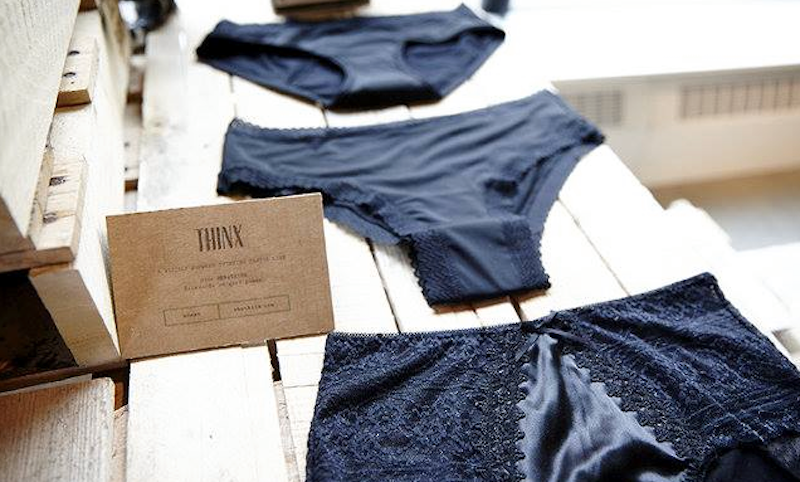Tampon Alternatives Come to Forefront After Model Loses Leg to TSS
After reading about Lauren Wasser, a 27-year-old model who lost her leg to Toxic Shock Syndrome (TSS), I was reminded that tampons aren’t completely innocuous. Vice‘s coverage was of Wasser’s traumatic experience and her lawsuit against Kotex, the makers of her tampon brand. And while it is important to know that tampons aren’t the only factor in getting TSS, it was a reminder that tampons are a dirty business.
To avoid TSS, the medical community recommends that women change their tampon regularly and use an absorbency that matches their flow. According to the FDA, some of the information found in the Vice article isn’t true–like for instance that rayon in tampons causes TSS. However, if you are concerned about losing a limb, going into organ failure and suffering greatly, you should know there are alternatives to the most commonly advertised tampon brands.
Tampons aren’t just potentially toxic for women, they don’t do much for the environment, either. And pads aren’t exactly environmentally friendly alternatives. Seventy-three million women in the United States use tampons, and a single woman may use as many as 16,800 in her lifetime—24,360 if she’s on estrogen replacement therapy. According to the Women’s Environmental Network, “an estimated 12 billion pads and 7 billion tampons are disposed of annually”, and the average woman will throw away up to 300 pounds of feminine hygiene related products in her lifetime. In 2006, the non-profit Ocean Conservancy found almost 20,000 tampon applicators underwater and along shorelines. While this is a vast improvement from its 1998-1999 study, in which they found 170,000 applicators, it’s still a whole lot of waste, even before you factor in packaging.

Whether your motivation is having a clean body or not adding more waste to the world, here are a few companies with some alternatives to the standard tampon:
1. Jade and Pearl sea sponge tampons are an all-natural alternative to cotton tampons. Sponge tampons last approximately six months before needing replacement and are 100 percent biodegradable. The sponges are easy to clean and can be refreshed using a bevy of natural cleaners.
2. Menstrual cups are another alternative to tampons. Different kinds of menstrual cups use different materials. The Keeper, which has been on the market for almost 30 years, is made of all-natural, soft gum rubber. The Moon Cup and the Diva Cup (Hilary Duff’s character on Younger gave a shout out to the Diva) are both made from silicone, an option for women with latex allergies. The cups are cleanable and can last for a decade, also saving women money.
3. Natracare originally introduced organic cotton tampons in 1993 and offers them in both applicator and non-applicator versions. Seventh Generation more recently developed its line of tampons made with organically grown cotton. The tampons are whitened without using chlorine, eliminating residue from chlorinated hydrocarbons, including dioxin, and are free of rayon, dye and fragrance. Seventh Generation uses 100 percent recycled material in their packaging and there is no applicator, eliminating unnecessary waste.
To get the convenience of a disposable pad without chemicals or waste, Natracare also developed pads that are chemical-free and made from natural materials. The moisture-barrier layer is made from plant cellulose. The pads are free of rayon and plastic, tend to be less bulky than cloth pads and have an adhesive strip like mass-market pads, but are biodegradable and even compostable.
4. o.b. is a popular brand of applicator-free tampons found in most stores. According to their site, using o.b. tampons eliminates one pound of waste per year, has 58 percent less waste than other disposable brands with applicators and uses recycled materials for their boxes. You can also find non-period related green information on the o.b. website.
5. GladRags has green period options for non-tampon users. They make a variety of cloth pads, made from 100 percent cotton and “come in conventional cotton, undyed organic cotton, and organic color cotton.” The pads are reusable, machine-washable and can last for more than five years.
6. If these companies don’t appeal to you, there’s always the DIY fabric route when it comes to period pads, which gives new meaning to “being on the rag.” Or you can try Thinx, a socially-minded company that provides period panties for you, and pads for girls in countries without feminine hygiene products.
7. And there is also the new “free-bleeding” movement that has been gaining traction over the years. You can read at least one blogger’s experiment with it—and yes, it is just as messy as it sounds.

Periods are personal business and how you deal with them is up to you. But it is nice to know that you have more options than just tampons.


